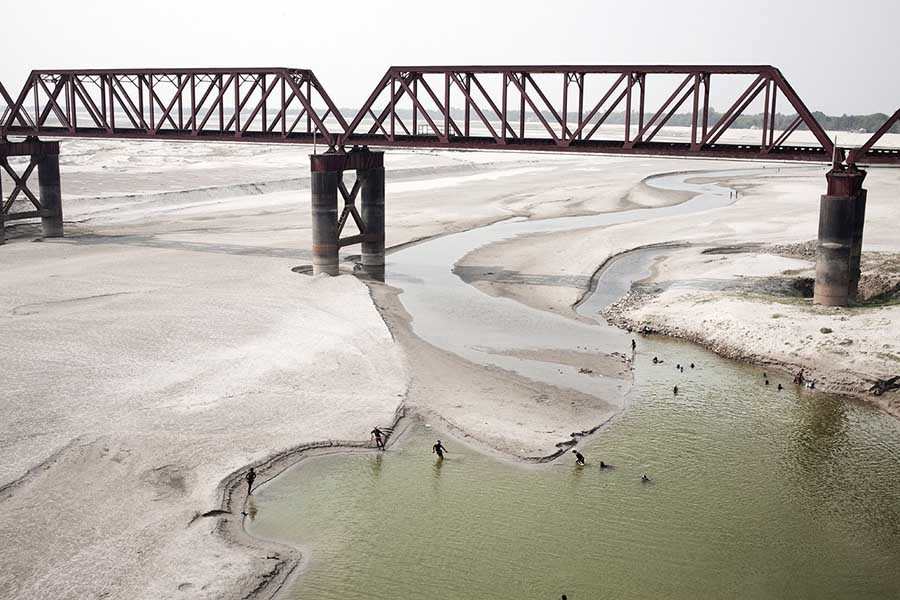With March 14 regularly observed as International Day of Action for Rivers since 1997, the significance of the day has grown in dimension and spread across the world. The slogan for Bangladesh this year was -'Green vehicle, clean river`. In cities public transports driven by 'dirty energy´ are contributing to a squeeze on the volume of water bodies. On the other hand, if the transport system is as environment-friendly as bicycles, pollution of rivers will be greatly reduced.
It is the responsibility of the government to ensure adequate water flow in rivers, to protect biodiversity and take action against polluters and encroachers. As we talk about river protection, issues that instantly crowd our vision are encroachment and river pollution. The encroachers by intruding upon the naturally engraved shorelines build structures and inflict damages to the environment. In addition, factories built by encroaching upon the banks of rivers and water bodies and mostly without effluent treatment plants (ETP) continuously release industrial waste and pollutants causing threat to human and aquatic lives in the adjoining areas and beyond.
The tragedy that has of late befallen the country is that the rivers are drying and dying. Drying is being caused as a result of accumulating silts on one the hand and indiscriminate urbanisation on the other. Mainly the small and medium-size ones are being filled up from their banks. This not only affects the natural flow of rivers and canals, size of water bodies are also reduced in the process and navigability lost. In addition, rivers are prone to surface water pollution that arises from oil spillages from vehicles and nearby factories. Secondly, water is pumped out during the lean season from many rivers for irrigation. Although we get some paddy out of the process, the natural production of freshwater fish is destroyed. As a result of pumping out water from different rivers, almost one third of our rivers have already lost their year-long navigability.
Since almost all factories in Dhaka and adjoining areas have no waste treatment plants (ETP) of their own, industrial waste like chromium, nitrate, lead and high level mercury are regularly disposed of to the river Buriganga. It is found that each litre of Buriganga water contains 0.48 mg of chromium which may even be a cause of death. According to the Inland Water Transport Authority, 185 types of waste are responsible for polluting the waters of four rivers flowing around Dhaka. Every day on an average 7,159 kg of industrial waste is being dumped into Turag river from the industrial units at Tongi. Not only that, due to unplanned growth of industries on the banks of Shitalakhya at Narayanganj and Karnaphuli at Chittagong, pollution from industrial waste has been increasing alarmingly making these rivers biologically dead. Furthermore, sulfur of gas cylinders and nitrogen compound are polluting the atmosphere of coastal areas.
Rivers follow some rules of Nature and if the width of a river is reduced by encroachment, natural flow may reduce in volume, as a result of which the depth of the river is lowered. If rivers are part of a network, the flow will be diverted to some other channel and if unconnected to any network, floods will occur in case of slightly high rainfall.
There is very little option other than restoration of the drying and dying rivers. The rivers can be brought back to life by following processes of 'river management' and building 'river training infrastructures'.
Raising public awareness is of utmost importance. People should be made aware of the importance of keeping rivers free from pollution. If we raise our voice for the right cause and tackle problems with technically sustainable mode of solutions, policymakers will eventually respond.


